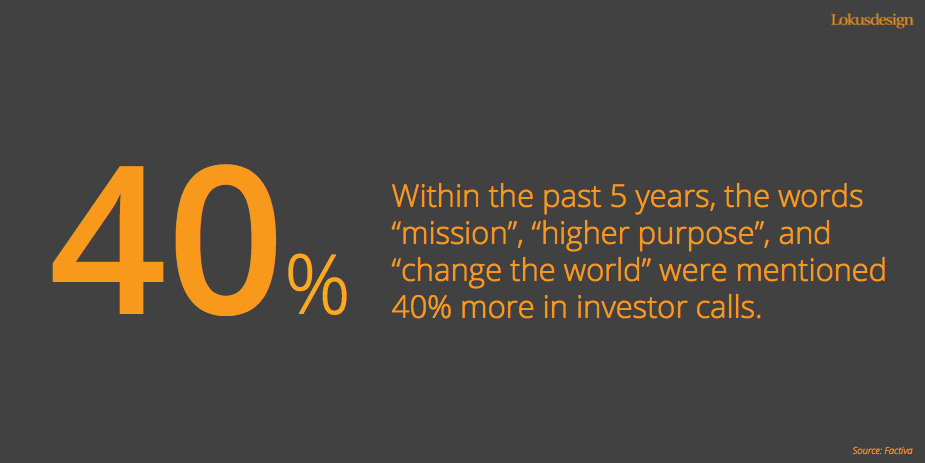Brand Strategy Inside- Out
Branding is a lot more than just a cool logo or catchy tagline. Building a brand is a process; a process that starts by identifying your core and defining yourself. For it is the culture that attracts customers, and customers that direct the nature of your communications. This will result in establishing long-term relationships with your customers. That, in turn, will lead to more word-of-mouth referrals, a steady increase in sales, and advocacy for your products and services.
With purpose-driven brands enjoying higher levels of success at attracting customers, retaining talent, and enjoying profits, it’s increasingly important to define those critical elements that can bring meaning to your brand. Here’s how you should go about defining a few key elements of your brand strategy:
-
Start by identifying your core
Every brand exists for a reason. McDonald’s exists so it can be their “customers’ favourite place and way to eat and drink”. Why does your brand exist? Which inherent, intrinsic, authentic, and inspiring strengths are fundamental to your brand? What is that one central idea your brand represents? Answers to all these questions will emerge from introspection – when all the internal stakeholders get into a structured discussion. Understand the shared values and positive valence that your brand possesses, and identify core elements such as authenticity and credibility that define your brand.
-
Move on to establish a mission statement
Before you can build a brand that your customers trust, you need to craft a clear expression of what your company is most passionate about, what value it provides. For Coca Cola, the mission is “to refresh the world in mind, body, and spirit”. Have you thought about your mission? Your brand’s mission statement is a critical element of communicating your brand purpose and basically defines your reason for existence. It lays the foundation of every other aspect of your brand building strategies. Everything from your logo to your slogan, your brand voice, message, and personality should reflect that.
-
Identify key qualities and benefits of your brand
Your products, and services, and the benefits you offer belong solely to you. So, delve deep and nail down what you offer. Perhaps something that no one else is offering. For Apple, innovation is what drives the company. It is through innovation that Apple has been able to strike a chord with customers and create a niche. Focus on the qualities and benefits that make you and the value that you deliver unique. This gives your target audience a reason to choose your brand from the melee of brands in the market. Note that the key qualities are not just a laundry list of features of your product or services. They are about the value you provide to customers, the values that help them overcome a challenge or improve their lives.
-
Form your brand voice
The personality and emotion infused into your voice depend entirely on your company mission, audience, and industry. Your brand’s voice is how you communicate with your customers, and how they respond to you. While defining your brand voice, make sure to choose one that makes sense and aligns with your Purpose. Nike’s brand voice, for instance, is inspirational – pushy even. But it motivates you to improve yourself. You’ll see that if you find and use the correct brand voice, you have the strongest chance of communicating meaningfully with your consumers. Your community of customers, followers, and readers expect a certain brand voice and brand personality when they consume your content; so, make sure you are recognised that way on multiple channels.
-
Build your brand message
When building your brand purpose, you need to tell customers exactly who you are. Use the brand voice as a foundation, and delicately build your brand message that associates your brand, its purpose, and the audience. Make sure to go beyond your logo and tagline, and define aspects such as who you are, what you do, and what value you offer to your customers. A brand message is your first opportunity to communicate with your audience; so, choose a language and tone that is understood immediately while striking a direct emotional connection with your consumers. Reveal not just what your product can do, but why you do it, and how it is important to your customer.
-
And integrate your purpose into every aspect of your business
Defining your brand purpose should not stop at forming your brand voice or building your brand message. It should be visible and reflected in everything your employees and customers can see, read, and hear. As Jeff Bezos says, “brand is what people say about you when you’re not in the room”. So, whether your customer walks into your office, sees an ad, interacts with your call center executive, or reads a news item about some corporate activity, every tangible aspect of your business should reflect your brand purpose. Mind the nuances -use a clear style guide to create consistency with visuals; incorporate your voice, message, and personality into all your communications.
Stay true to your brand purpose
Defining your brand purpose is one of the most significant things you can do for your brand. When authentic and real, your customers will develop a deeper level of trust for your brand. This is the basis for an enduring relationship beyond trends and competitive pressures.
The important element is to develop the consistency that reinforces your brand’s core. Make sure to integrate that into every aspect of customer experience: from your retail store to your website, social media posts to one-to-one interactions. Once you have defined your brand’s purpose, make it the basis for everything you do. Stay true to your brand purpose and focus on consistency to make long-term brand building an automatic extension of what you do every day.
Looking for help to define your Brand Strategy? Write to us at info@lokusdesign.com

